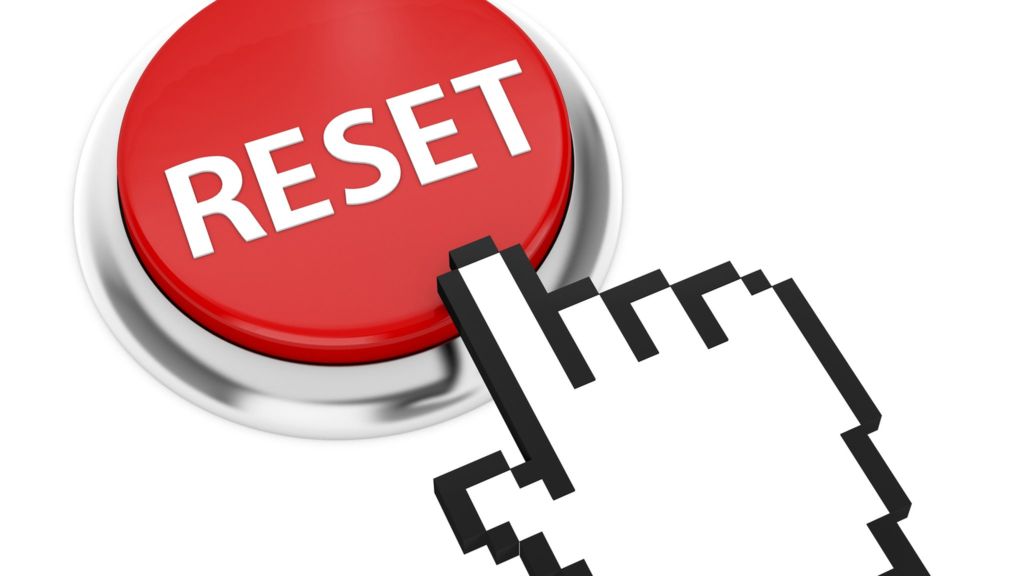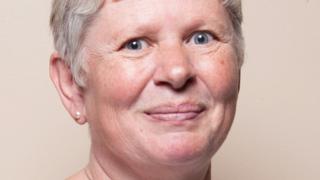Debt: Why more people are pressing the bankruptcy button – BBC News


A hug, a dance and a song is hardly the reaction you would expect from someone just about to be declared bankrupt.
The threat of losing your home, a year of financial restrictions, three years of paying creditors, and a six-year blight on your credit rating does not generally prompt a musical routine.
Yet the relief of facing up to, and striking out, unmanageable debts can lead to such a response, according to debt charities.
In this case, it was a man called Stephen, who submitted his bankruptcy form, hugged a debt counsellor, and danced around their office.
Now the perceived stigma of bankruptcy has also been diluted, according to the Insolvency Service. A new system in England and Wales means applications are made online, without the need to go to court.
‘Psychological’
“Going to County Court with 30 pages of paperwork in triplicate was a huge, daunting challenge under the old system,” says Mark Cowley, insolvency manager at debt charity Christians Against Poverty.
“There was a psychological effect in going to court. Many people assumed it was criminal although it is a civil procedure.”
Figures suggest that the new clickable application, and its lower fee, has increased the numbers choosing bankruptcy. So, is this a simple matter of convenience or is it actually the result of more people facing unmanageable debt as wages are squeezed and prices rise?
‘It took away the stress’

Shirley, from Basildon in Essex, had debts of more than 40,000. After attempting suicide, she was referred to Christians Against Poverty debt counsellors by her local housing association.
The charity says it would have taken her more than 20 years to repay the debts, so she applied for bankruptcy with a counsellor’s help.
“I suffer with anxiety, and when I get stressed I get blackouts,” she says.
“The thought of going to court for bankruptcy was a bit scary, I didn’t like that idea. My debt coach told me I wouldn’t need to go. Filling in the form online made it a lot easier. It took away the stress. I did have some help from my support worker because I’m dyslexic, but it was very easy. It was all really quick.”
Now, after setting up a savings plan with the charity, she is 63 in credit. “I’ve never been in credit that much before,” she says.

There are a variety of ways that someone with out-of-control debts can deal with the situation by going insolvent. Bankruptcy is only one of those options, yet it is the most recognised.
The threat of losing your home, the public admission of money troubles, and that trip to court have all created the stigma that has been attached to bankruptcy – even though, for some, it is clearly their best option.
The shift from court to internet, introduced in April and the biggest change to bankruptcy rules for 30 years, was in part an attempt to eliminate that perceived shame.
“It was a real barrier for some people,” says Liz Thomas, The Adjudicator at the Insolvency Service for England and Wales. “We now have a simpler form, we have ensured the questions were understood, and people are able to complete it in their own time.
“It is still lengthy. It takes several hours to fill in, and there is information to ensure people understand the seriousness of what they are doing.”
But now, after pressing the submit button, some 95% of “successful” applicants are declared bankrupt within two working days.
Bankruptcy and alternatives

Bankruptcy: The traditional way of escaping overwhelming debt. Ends after one year, but there is a possibility you may lose your assets, including your house, to pay something to the creditors. Since April, applications can be made online and considered by an adjudicator. Costs 680
Individual Voluntary Arrangement (IVA): A deal between you and your creditors, overseen by an insolvency practitioner. Less chance of losing your home, but involves paying some of your debts in one go
Debt Relief Orders: Introduced in April 2009, these allow people with debts of less than 15,000 (20,000 since October 2015) and minimal assets to write off debts without a full-blown bankruptcy
‘Spooked’
The new online system – unlike some more high-profile government IT projects – was on time and it worked. It remains exposed to the same frailties as any other online service. On Thursday, it was unavailable for several hours owing to a fault.
Still, the effect of the new system is starting to show, according to the Insolvency Service. The number of individuals declaring themselves bankrupt rose by 7% in the third quarter of 2016 compared with a year earlier. The full set of 2016 figures will be published on Friday.
Having assisted many people to complete bankruptcy applications, debt charities have broadly welcomed the online form.
“The roll-out date was optimistic, but the project has worked. The name ‘bankruptcy’ still spooks people, but it has taken the stigma out of it to some degree,” says Mr Cowley, of Christians Against Poverty.
Ironically, 90% of users say they would recommend the system to family or friends. A recommendation, no doubt, that they would rather not have to take up.

The upfront application fee is also cheaper. Under the old system, it cost more than 700; now, as there is no need for court fees, it costs 680.
That is clearer, charities say, but not necessarily better – or ultimately cheaper – for the poorest applicants. Under the old system, a court could waive its fee of about 150 for the most vulnerable.
That discount, or an equivalent, is no longer available. In its place is a system allowing people to pay the 680 fee in instalments. That fee, says Liz Thomas, will cover the cost of developing the new system within five years, at no cost to the public purse.
In Scotland, insolvency works very differently to England and Wales. The equivalent to the Insolvency Service is the AIB (Accountant in Bankruptcy).
The AIB functions like a court. Those seeking bankruptcy can apply online but not on their own. They have to have received advice from an approved money adviser or insolvency practitioner before applying.
In Northern Ireland, all bankruptcies are made through the courts.
Where to go for help
Where to find free debt advice
Insolvency service – bankruptcy explained (England and Wales)
Options for clearing debts – Scotland
Options for clearing debts – Northern Ireland

The online systems may have been applauded, but the true test has yet to come. Insolvencies are at historically low levels putting relatively little pressure on the system, but there are signs that the red alert is starting to return.
Bank of England governor Mark Carney has frequently taken the opportunity to express concern about the level of household debt.
Borrowing on credit cards and unsecured debts such as overdrafts is rising at its fastest rate for a decade – a trend that he says requires the bank’s “vigilance”.
Rising unsecured debt should not be a problem when interest rates are low – as they are – and wages are rising. Yet it does leave households exposed to a financial shock if jobs are lost or interest charges rise.
So, there is some concern that default rates on this unsecured debt increased in the final three months of 2016, according to the Bank of England’s Credit Conditions Survey.
The following graph also reveals that UK households are funding their spending by dipping into their wages. This was happening at its fastest rate for two years in the third quarter of 2016, according to the latest official statistics.
A saving ratio of below zero basically means households are not saving, but are spending more than their disposable income. It was negative from the start of 2004 until the latter end of 2008.
The Office for National Statistics says a fall in the saving ratio may be an indication that households are more confident and spending more, rather than desperately ducking into their savings.
Analysts Capital Economics also notes that there is no need to panic over household debts.
The cost of servicing debts compared to household income is still low and manageable, it says. Interest rates would have to rise significantly to raise this cost to the levels seen in 2008.
No crisis in household debt means no glut of bankruptcies.
Still, there will always be people whose debts spiral out of control – and, for them, applying for bankruptcy has got a little bit easier.
Read more: http://www.bbc.co.uk/news/business-38668084